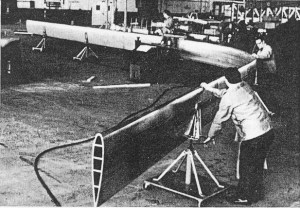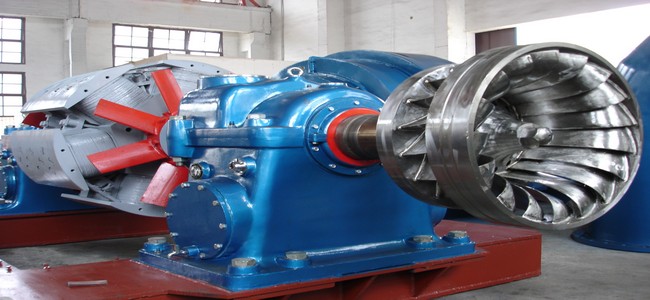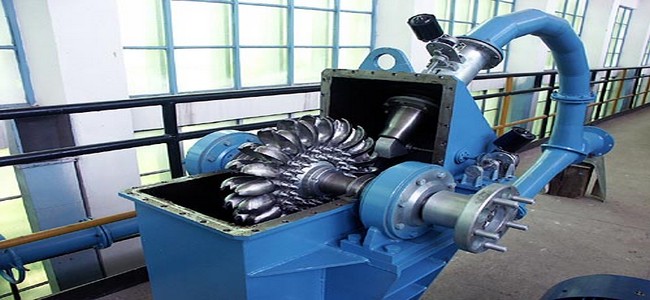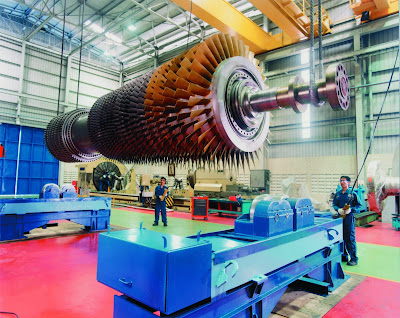The Patent For Darrieus Turbine
The Darrieus wind generators was patented in the United States by G. J. M. Darrieus in 1931. It was reinvented by engineers with the National Research Council of Canada within the early 1970’s. Sandia Laboratories built a 5 m diameter Darrieus in 1974, and has been strongly involved with further analysis on the Darrieus turbine since that time.Most wind generators designed for the manufacturing of electricity have consisted of a two or three bladed propeller rotating around a horizontal axis. These blades are usually expensive, excessive expertise items, and the turbine must be oriented into the wind, another costly task for the larger machines. These issues have led many researchers in search of simpler and less expensive machines. The variety of such machines seems endless. One that has seen appreciable improvement is the Darrieus wind turbine.
Fig. 1 reveals a 17 meter Darrieus constructed at Sandia. The diameter of the blades is identical as the height, 17 m. The extruded aluminum blades have been made by Alcoa (Aluminum Firm of America, Alcoa Center, Pennsylvania). This machine is rated at 60 kW in a 12.5 m/s wind.
Fig. 2 reveals one of the blades throughout fabrication. A number of models of this fundamental machine were constructed during 1980.
The Darrieus has several attractive features. One is that the machine rotates a few vertical axis, hence doesn't must be become the wind. Another is that the blades take the form of a leaping rope experiencing excessive centrifugal forces. This shape is named troposkein, from the Greek for turning rope. For the reason that blade operates in virtually pure pressure, a relatively light, cheap blade is sufficient. Another advantage is that the ability practice, generator, and controls are all located near floor stage, hence are easier to assemble and maintain. The effectivity is sort of nearly as good as that of the horizontal axis propeller turbine, so the Darrieus holds appreciable promise as a value effective turbine.
The Major Disadvantage of Darrieus Type
One drawback of the Darrieus is that it isn't usually self starting. That is, if the turbine has stopped during a period of low wind speeds, it will not normally start when the wind pace increases. Starting is often accomplished by an induction motor connected to the local utility network. This isn't essentially a serious disadvantage as a result of the identical induction motor can be used as an induction generator to produce energy to the utility community when the turbine is at operating speed. Induction machines are easy, rugged, and inexpensive, requiring basically no controls apart from a contactor to attach the machine to the utility network. For these reasons, they're seeing extensive use as wind turbine generators.
 |
| Figure 1 : Darrieus Wind Turbine |
The first giant Darrieus constructed was a 230-kW machine on Magdalen Island, Quebec, Canada in Might, 1977 by Dominion Aluminium Fabricators, Restricted of Ontario, Canada. The common energy output of this machine was one hundred kW over the first yr of operation, which is kind of good. Then a noise was observed in the gearbox so the machine was stopped forinspection and repairs. Through the inspection process, the brakes had been removed, which should have been secure as a result of the turbine was not supposed to be able to self start. Unfortunately,
on July 6, 1978, the turbine began, and with no load or any means of stopping it, went effectively over the design velocity of 38 r/min. The spoilers didn't activate correctly,and when the turbine reached 68 r/min a man wire broke, letting the turbine crash to the ground. Perhaps the primary lesson discovered from this accident was that the Darrieus will generally begin under unusual gust circumstances and that braking systems should be designed with this fact in mind.
A major design effort on Darrieus turbines has been made by Alcoa. They first designed a 5.5 m diameter machine which would produce about 8 kW of power, however dropped that size in favor of extra economical larger machines. Different sizes developed by Alcoa include a 12.8 m diameter (30 to 60 kW), 17 m diameter (60 to 100 kW), and a 25 m diameter (300 or 500 kW relying on the gear ratio).
The Alcoa effort has been stricken by a number of accidents. A 12.8 m diameter machine collapsed at their Pennsylvania facility on March 21, 1980, when its central torque tube began vibrating and ultimately buckled when the machine was working above rated speed. Then in April, 1981, a 25 m machine crashed within the San Gorgonio Cross east of Los Angeles.The machine itself labored correctly to a pace nicely above rated velocity, but a software program error in the microcomputer controller prevented proper brake utility in excessive winds. When the machine rotational pace reached 60 r/min, effectively above the rated velocity of 41 r/min, a bolt broke and allowed a blade to flare outward and cut one of many man wires. The machine then crashed to the ground.
 |
| Darrieus Wind Turbine Fabrication |
Accidents like these are usually not unusual in new expertise areas, however they're certainly
frustrating to the folks involved. It appears that the various problems are all solvable, however the string of accidents actually slowed the deployment of Darrieus generators as compared with the horizontal axis turbines.
Sandia continued work on the idea of the Darrieus turbine through the Eighties, with the outcome that the turbine is properly understood today. It appears that there isn't any reason the Darrieus could not be an necessary contributor to the manufacturing of energy from the wind. It just needs a large aluminum firm that's willing and capable of do the aluminum extrusions and possibly watch for a number of years before seeing a major return on investment.
Modified from : http://www.turbinesinfo.com/darrieus-wind-turbines/























